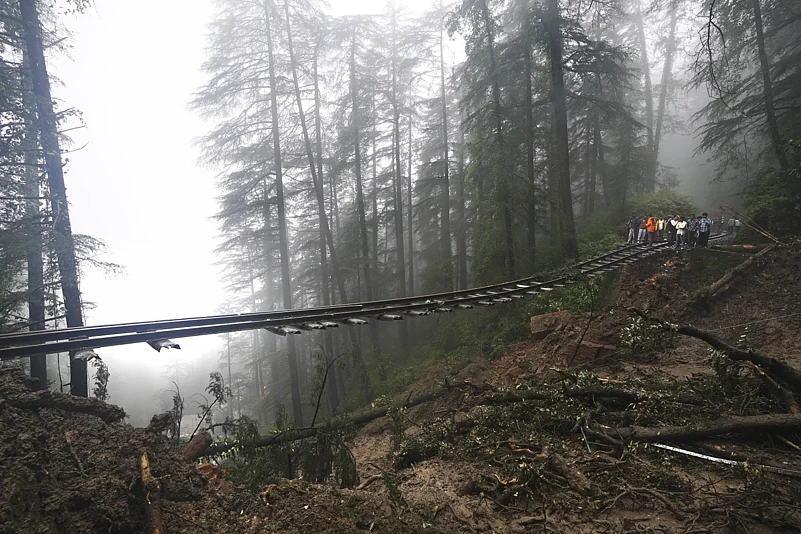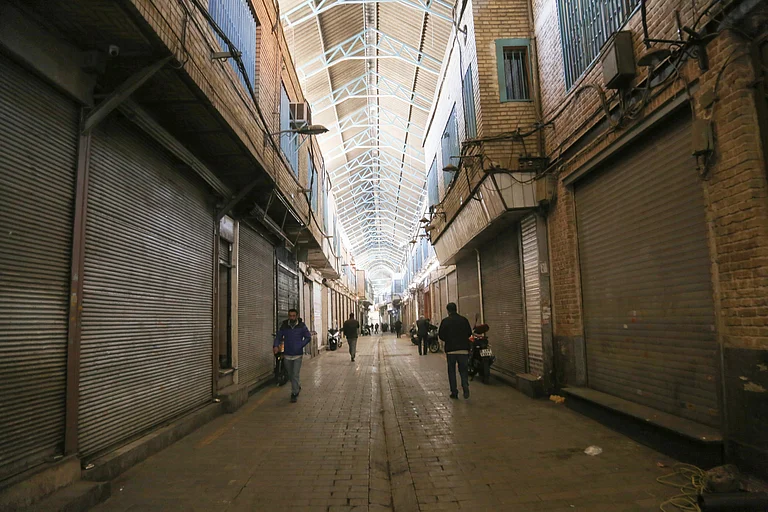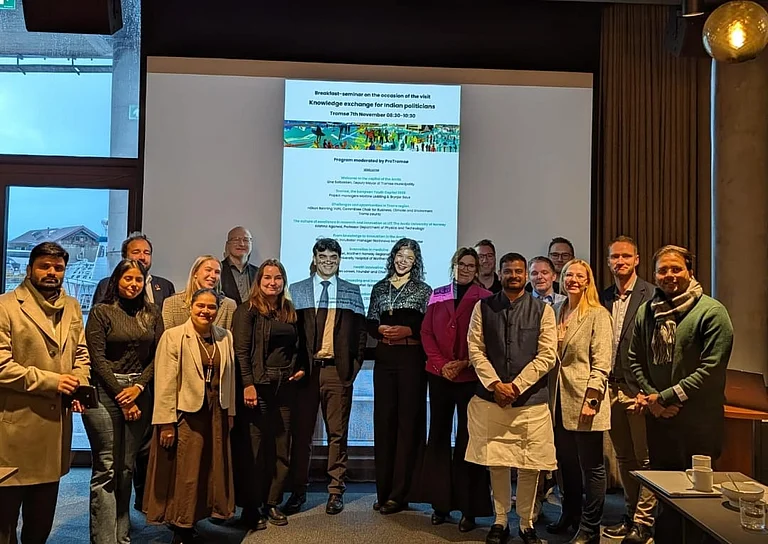2023 was unlike any other year, at least in living memory and since weather records began to be maintained nearly two centuries back. The past year turned out to be the hottest ever, with varying scientific estimates of annual temperature average registered between 1.1 to 1.48 degree Celsius above the pre-industrial levels. This average annual temperature was very close to the 1.5 degree Celsius threshold which scientists say is a crucial barrier to protecting the planet from sustained extreme weather events.
Nonetheless, the year 2023 saw extreme weather events in terms of storms, rainfall, wildfires, drought and heat waves. Almost every part of the world was impacted by these events, from Australia to Canada, from India to America (USA).
The warming did not just impact the inhabited parts of the planet but also polar regions. As per EU scientists, in Antarctica, sea ice witnessed its record low extents over 8 months in 2023 compared to the corresponding months in previous years. February 2023 recorded all-time minima for both the daily and monthly extents. In the north, the Arctic sea ice extent was recorded to be among the fourth lowest for its annual peak in March.
For the record, Antarctic Peninsula has been warming up nearly five times faster than global average. The region has become hotter by almost 3 degree Celsius since 1950. Between 1992 and 2017, the frozen or white continent, as Antarctica is also known, has lost about 3 trillion tonnes of ice. Most of this loss has been recorded in West Antarctica.
Global warming has already started to impact Antarctic Peninsula and West Antarctica and sooner or later the effect will also be felt in East Antarctica, also known as inner Antarctica. The ice sheet in inner Antarctica is up to 4.5 kilometre thick and its melting could trigger catastrophic rise in sea levels around the globe.
The white continent plays an important part in our understanding of Planet Earth; it impacts climate in rest of the planet. Similarly, warming in other parts of the globe also impacts Antarctica. This is why the climate in Antarctica and the rest of the planet are inextricably linked.
In this context, Outlook spoke to Dr Thamban Meloth, director of the National Centre for Polar and Ocean Research (NCPOR), to understand the importance of polar regions, the threat of climate change on polar regions and in rest parts of the globe, and India’s role in Antarctica, the only continent which is naturally uninhabited and is not governed by any country - in short, the last great wilderness on the planet.
Dr Meloth, a distinguished scientist who was recently elected as a Fellow of the Indian Academy of Sciences, Bengaluru, also helped us understand what it means to be in Antarctica, why our future resides on the white continent, the reason why the Himalayan region could become a permanent home for disasters, and why climate change is the biggest threat that our planet faces.
For the record, NCPOR is India’s nodal agency for research activities in the polar and Southern Ocean regions and it undertakes expeditions to Antarctica, the Southern Ocean, the Arctic and even the Himalayas, which it calls the third pole. The agency manages India’s research stations in Antarctica (Maitri and Bharati) as well as the Arctic (Himadri) and the Himalayas (Himansh), and is also mandated to explore non-living resources in deep ocean regions.
Here are the excerpts from the interview:
Q: You have been to both the polar regions, Antarctica and the Arctic - the two remotest places on the planet. How did it feel to be there? Did it feel like you were on a different planet?
Dr Meloth: I was lucky to travel to all the poles including Antarctica and the Arctic. I was also part of the expedition that went to the South Pole. I have been a part of the Southern Ocean expeditions, as well as expeditions to the Himalayan glaciers. When you land in Antarctica for the first time, you (do) feel like you are on another planet. It's quite surreal, extremely cold and completely white. Most of the research stations in Antarctica are located along the coast. This is because in the past, the only way to reach Antarctica was by ship. To put things in perspective, the geographic South Pole is nearly 1,200 kilometres to 2,200 kilometres away from the coast, depending on from which side you are approaching the point.
So, as you move away from the coast, you do not see anything other than just (white) ice. Sometimes, you even lose the sense of distance. You do not realise how far you are able to see. On a clear summer day, you can sometimes see objects or icebergs as far as 100 kilometres from higher elevations. This is because Antarctica has a very clear and dry sky; there is absolutely no air pollution. And it is so white there that even a small signboard makes you feel like it’s a big hill ahead. This is because the signboard is dark in colour and everything around is white. You appear to lose the concept of distance and size. However, many parts of the Arctic are not that different from Himalayas - you can see some ice as well as large areas of land, except in central Greenland. The rest of it is frozen ocean. So, Antarctica can be very surreal, for those who go there for the first time.
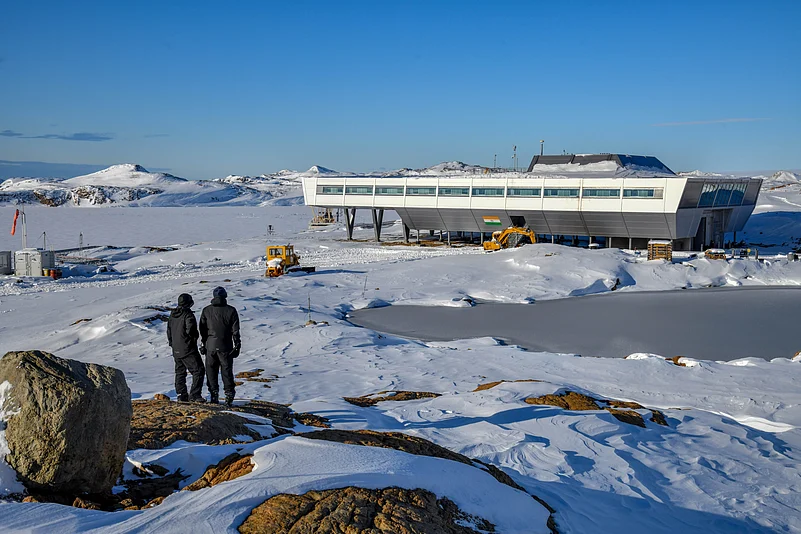
Q. India has announced that it is planning to build its fourth research base in Antarctica, which may become operational by 2029. The 43rd expedition to Antarctica is underway and the 44th is slated for later this year. The Central government also recently stated that it is in the process of building an indigenous polar search vessel (PRV/icebreaker). What are India's goals in Antarctica? Why is the white continent important to India?
Dr Meloth: While Antarctica looks so remote from where we live, our future resides on the frozen planet. First, the future rise in sea level is going to be decided by what happens to the thick ice sheets of Antarctica. The melting ice in Antarctica can push the sea level to rise by several centimetres by the end of this century. If you take into account storm surges and other elements, the actual sea level rise which you will see could be much higher. A lot of coastal regions will get affected even if sea level rises by a few centimetres. But it is also possible that the rise could be as high as one metre, as per some of the predictions. So, the level of rise in sea water is extremely important for our future and that will be decided by Antarctica. Therefore, understanding Antarctica is very important for humankind.
Secondly, our climate has already begun to waver so much. Global warming is no longer a fancy thing we read in books and see in the movies. It is a fact. We all have begun to experience the consequences of climate change in various forms and factors. The Indian Monsoon climate system is also getting altered and we now see extreme weather in some parts. All these are in some way or the other connected to the poles, mainly to Arctic but also have some connection with Antarctica. What happens in the Arctic and Antarctica does not stay there and its effects are felt all around.
As melting accelerates in Antarctica, the sea around the continent will receive large amount of freshwater and also undergo changes. It will then have an impact on the Indian Ocean, which in turn will affect Indian Monsoon. And it is not a one-way system. Studies have indicated that the tropics can also influence polar regions.

In early 2022, we witnessed a huge warming event of nearly 40 degree Celsius in Antarctica, which had a direct connection to the tropics. The warming in tropics affects polar regions through atmospheric rivers, which are narrow bands – like rivers in the sky – that transport most of the water vapour outside of the tropics. They can stretch thousands of kilometres all the way from tropics or subtropics to polar regions. When this warm air parcels make landfall in Antarctica, it can lead to extreme warming and snowfall in the polar regions. Within a span of a day, a temperature variation of several tens of degrees can happen. And that can impact some of the ice and ice shelves in Antarctica and make them potentially break away. This is why the extreme weather events in tropics or polar regions can have global impacts. The Arctic is even more important to us because it is directly linked to our Monsoon system.
With regards the recent announcement of the fourth research station in Antarctica, it’s in the initial stages of detailed planning. Being an extremely remote place, it require exceptional preparation and supply chain logistics. We hope to have a new station by 2030, provided everything goes as planned. This station will replace our existing Maitri station, which is already 35 years old.
Q. How is this new Antarctic station going to be different from the existing ones, especially Bharati which was the last to be commissioned in 2012?
Dr Meloth: The new station will be larger and state-of-the-art with facilities for advanced scientific observations and accommodation. Currently, Maitri is our main hub in Antarctica. Therefore, the new station that is to come up to replace Maitri base needs to be bigger and more advanced. When Maitri station was built, old technologies and environmental norms were in place and it has now become difficult to support more activities and adhere to the stringent environmental norms to comply with. In 2022, the Indian government enacted the Indian Antarctic Act, and all our activities would now follow the stringent norms of Indian Antarctic Environmental Protection Rules, 2023.
Q. What are the key goals of India’s 43rd and 44th Antarctic expeditions? What are some of the specific goals these expeditions are looking at achieving?
Dr Meloth: The annual expeditions to Antarctica will help continue very long-term goals of scientific observations that would contribute to a better understanding of the Antarctic climate, environment and ecology. But there are also some highly focussed experiments and short-term novel projects which are taken up during the expeditions. Some of these are also collaborative projects, including international collaborative campaigns as well. As part of these specialised projects, scientists conduct airborne radar studies of ice sheets, studies using unmanned aerial vehicles for mapping the land and ice, drill into ice sheets to understand climate change, and study the diversity of ecology of life in extreme conditions. Then, some of these specialised research have also focussed on frozen lakes in Antarctica.
But a common thread among all these projects is the research related to understanding the changing climate and its impact on ice and life in the polar regions, which is part of our long-term vision. The biggest challenge that the world faces today is climate change. Our future generations and the entire economy and everything else will depend on that in the coming decades.

Q. India still does not have its own Polar Research Vessel (PRV) despite having reached Antarctica more than four decades back. We have announced plans to build one but we still have to see whether it will materialise this time. In contrast, other polar superpowers, especially China, have had icebreakers or PRVs for decades now. In 2019, China even commissioned its first indigenous PRV. So, where does India stand in respect to all this? Has it impacted the country’s aspirations to become a polar superpower?
Dr Meloth: I don't think so. There is nothing called a polar superpower, as all activities in Antarctica are managed by the Antarctic Treaty signed in 1959, according to which Antarctica shall be used for peaceful purposes only. Presence and activities in Antarctica are directly related to the economic might of the nations. The US has established several large stations and observatories there. In the past, Russia was the leading country having stations in Antarctica. As the Indian economy is growing, we also expect to have more investments in the polar regions.
But remember that we were among the select club of 29 countries in Antarctica which have a consultative status under the Antarctic Treaty system. Every activity in Antarctica can take place only by consensus only. So, by being a Consultative Party to the Antarctic Treaty, India’s strategic interest is served very well.
Further, we have expanded our scientific and operational activities in Antarctica and we have now larger projects happening there. Therefore, I am confident that polar research vessel will become a reality, as it is under a serious consideration of the Indian government. But it’s also true that under the prevailing geopolitical situations the world has changed so much and operational costs have also gone up. We are not talking about a few crores of rupees here, but a few thousands of crores! These are larger investments which undergo a lot of scrutiny and take time to be cleared. Once approved, it would take another three to four years for the vessel to be built.
China has now several ice class polar and oceanographic vessels to support their growing ambitions as a global power. That's their outlook. Whereas we are planning more in terms of collaborative science and research.
Q. You have in great detail explained how climate change impacts Antarctica and the changes happening there affect the rest of the world. The question is, how can we protect Antarctica from the effects of human-induced climate change and in turn protect the rest of the planet?
Dr Meloth: We do not know whether we can completely protect Antarctica from future disintegration because there are both natural and manmade factors at play. We already have crossed a certain limit and may soon breach the desired value of limiting global warming within 1.5 degree Celsius. The future of the frozen poles depends on how much we are going to harm the world. If we are able to control the warming, we may still be in a position where we are able to manage it and adapt to the changes. Because any change which happen less rapidly, we may be able to adapt to it in a better way. So, all this still depends on us humans.
Q. I think 2023 came as a stark reminder, it turned out to be the hottest year ever and we saw so many extreme weather events in our country itself.
Dr Meloth: It's only the beginning of many stark things that are we going to see. Look at the Himalayas. We may not see the biggest consequences of climate change in our lifetime in Antarctica, but certainly in the Arctic and Himalayas. Drastic changes have been happening in higher Himalayas of late. You will hear about frequent disasters happening there these days because the region is warming drastically due to the elevation-dependant warming in high mountains. Himalayan terrain is a highly unstable region because it is a mountain range that was formed relatively recently compared to other mountain ranges due to the collision of the Indian plate with the Eurasian plate. Most of the slopes are unstable and covered with loose sedimentary deposits, making them vulnerable to any changes. Therefore, in a warming world, the large part of Himalayas whose top layer consists of frozen soil (permafrost), is thawing and losing its binding. Also, increased rainfall events in upper elevation are making things worse.
Himalayas are not only losing ice mass in the form of retreating glaciers, but as glacier melt and retreat, they are creating glacial lakes that get filled with water. These lakes continue to expand as glaciers retreat and after a point, these become vulnerable to breach as these are naturally dammed with loose sedimentary material. The 2023 South Lhonak disaster in Sikkim was a clear case of glacial lake outburst flood that was predicted long back. The only question was when exactly it will happen and whether an early warning system is viable. This is going to be the case across the Himalayas. There are thousands of such lakes that are expanding and becoming vulnerable. We are unable to predict individual disasters because there are so many of them and most of these are very remote where it is extremely challenging to have early warning systems, especially due to the difficult conditions and limited communication network.
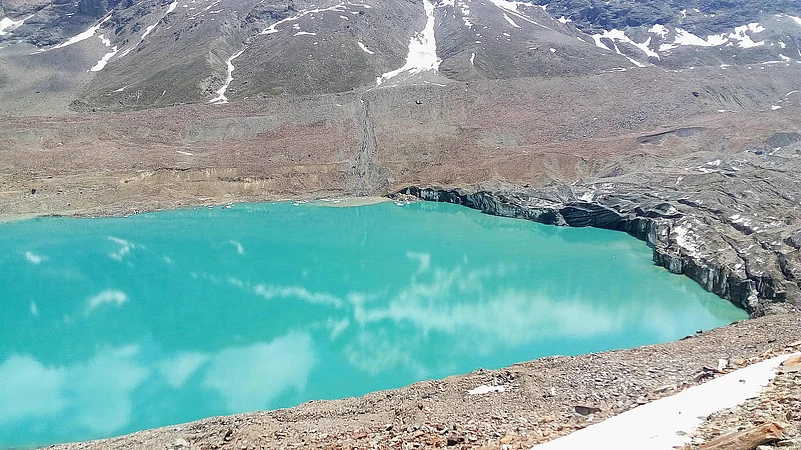
Early warning systems in high Himalayas are complicated or difficult to establish and maintain, unlike the Alps. But the National Disaster Management Authority is making efforts to set up early warning systems at selected dangerous lakes.
What happened in Kedarnath in 2013 and in Chamoli in 2021 had similar reasons – extreme weather making the glacial lake to breach or a catastrophic landslide and mass flow due the thawing of permafrost. All of this is essentially connected to the global warming and its regional manifestations. We may never be able to make reliable predictions as to what will happen next due to the limited data available in such remote sites. That's where the biggest challenge lies. To address such difficulties, the Ministry of Earth Sciences is supporting projects that can contribute towards the proposal for risk reduction in high Himalayas.
Q. 24 years from now, in 2048, the Antarctic Treaty is going to come up for a possible renewal. And the important elements of it could possibly be modified. The biggest concern is that the anti-mining regulation could be done away with major powers wanting to have their pie. So, what can be done to stop that and to preserve this remarkable continent on which depends the future of the entire planet?
Dr Meloth: No, it's not true. The Antarctic Treaty and its associated environmental protocol have no expiry date as any change in the governance regime requires a consensus among the Consultative Parties. In an increasingly polarised world, it is unimaginable. This was emphasised during the last 2023 Antarctic Treaty Consultative Meeting in Helsinki as well.







